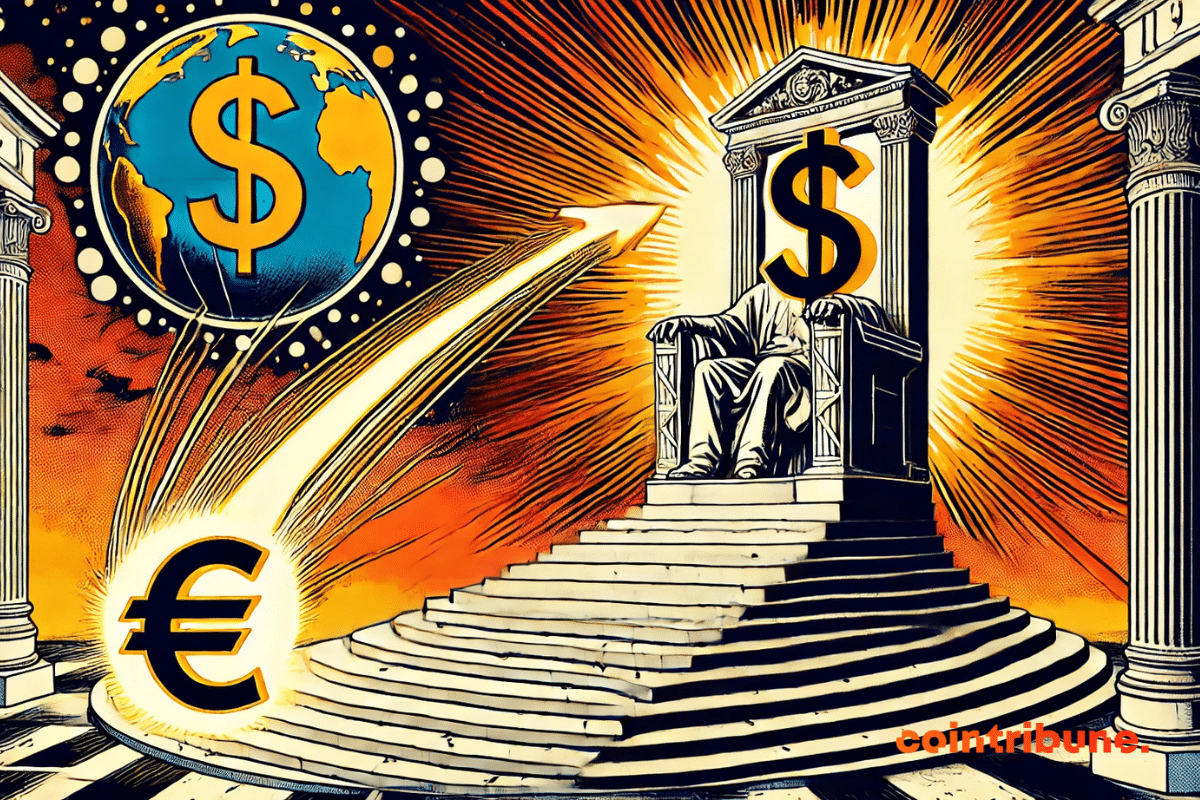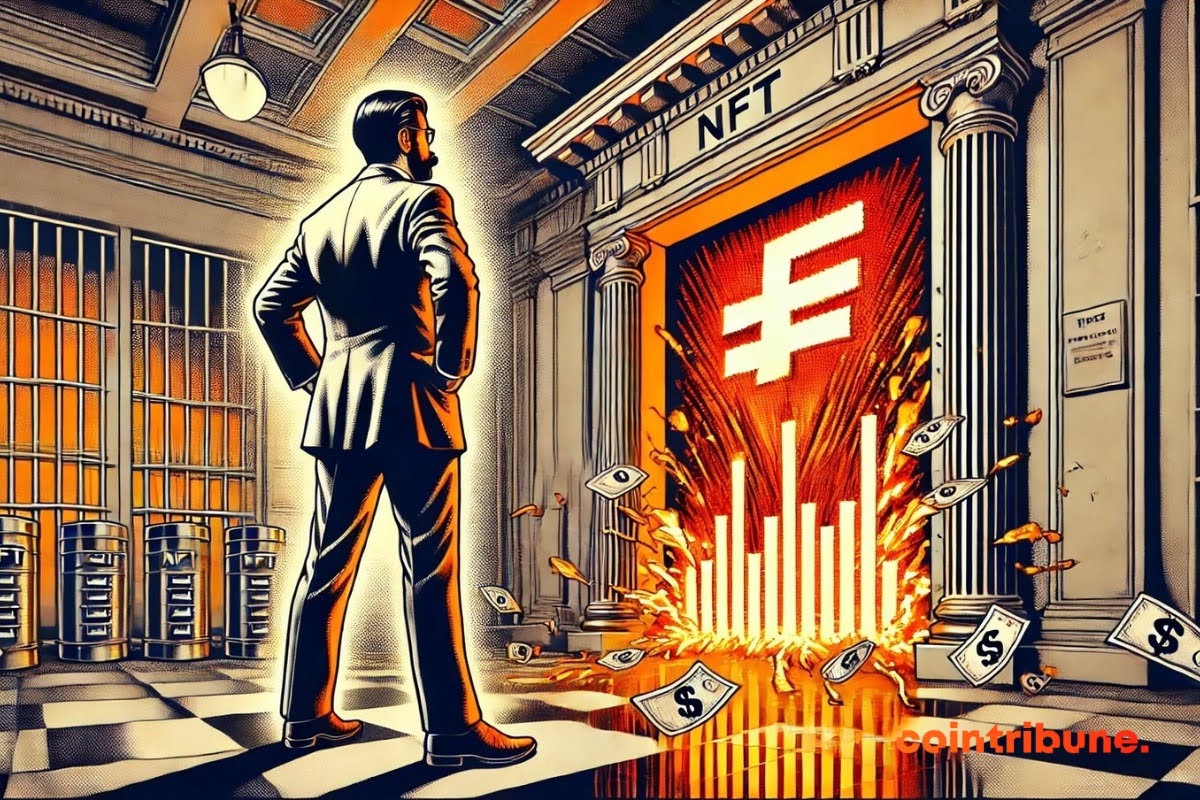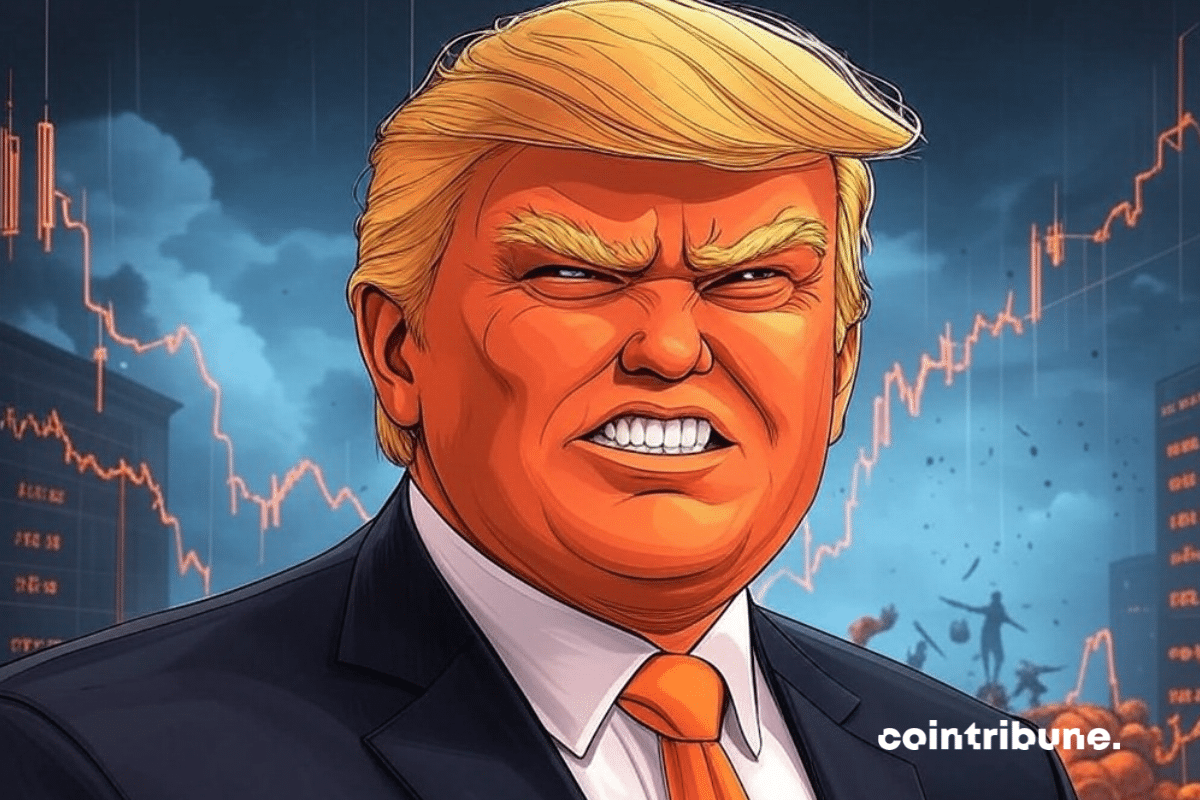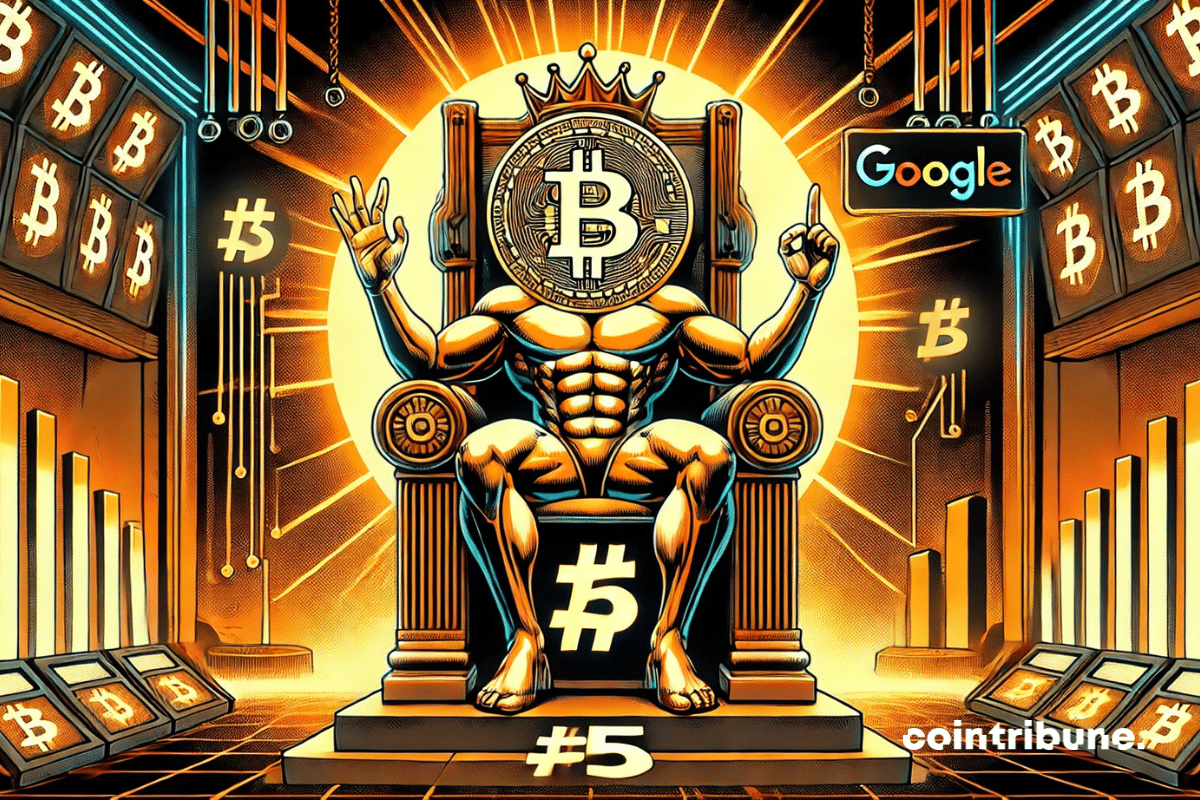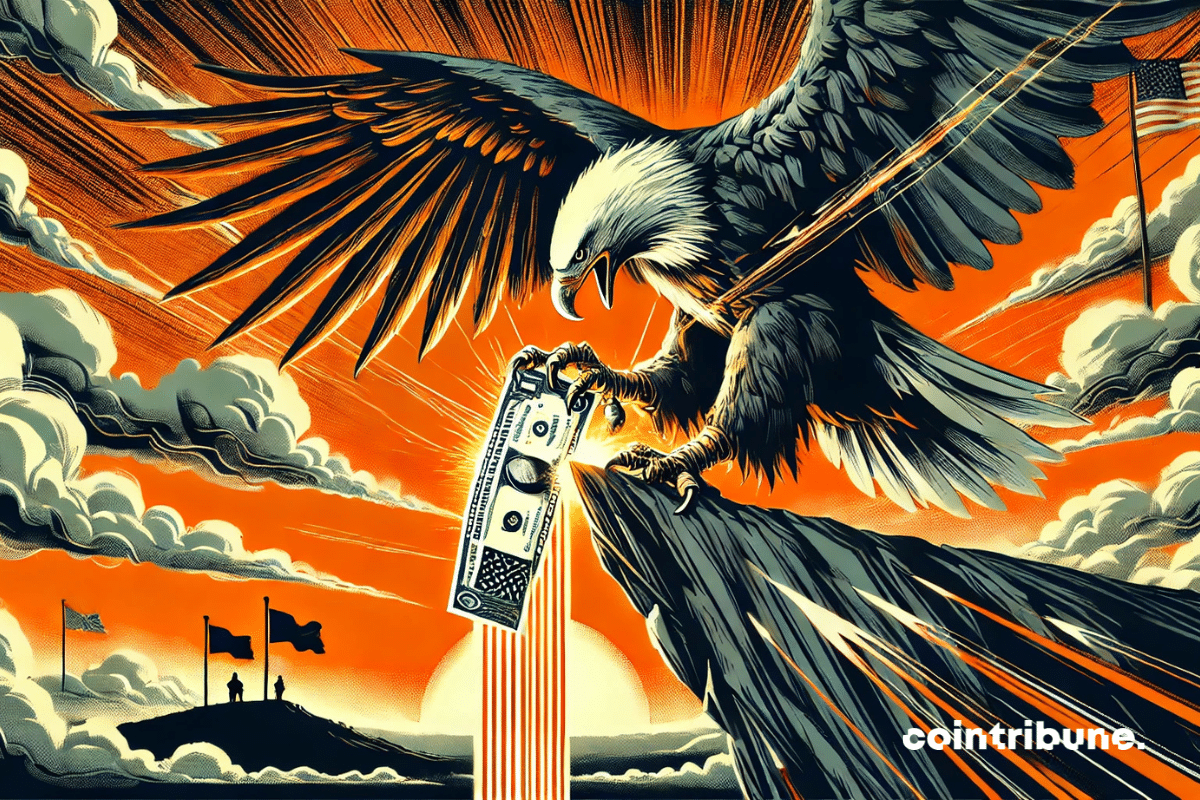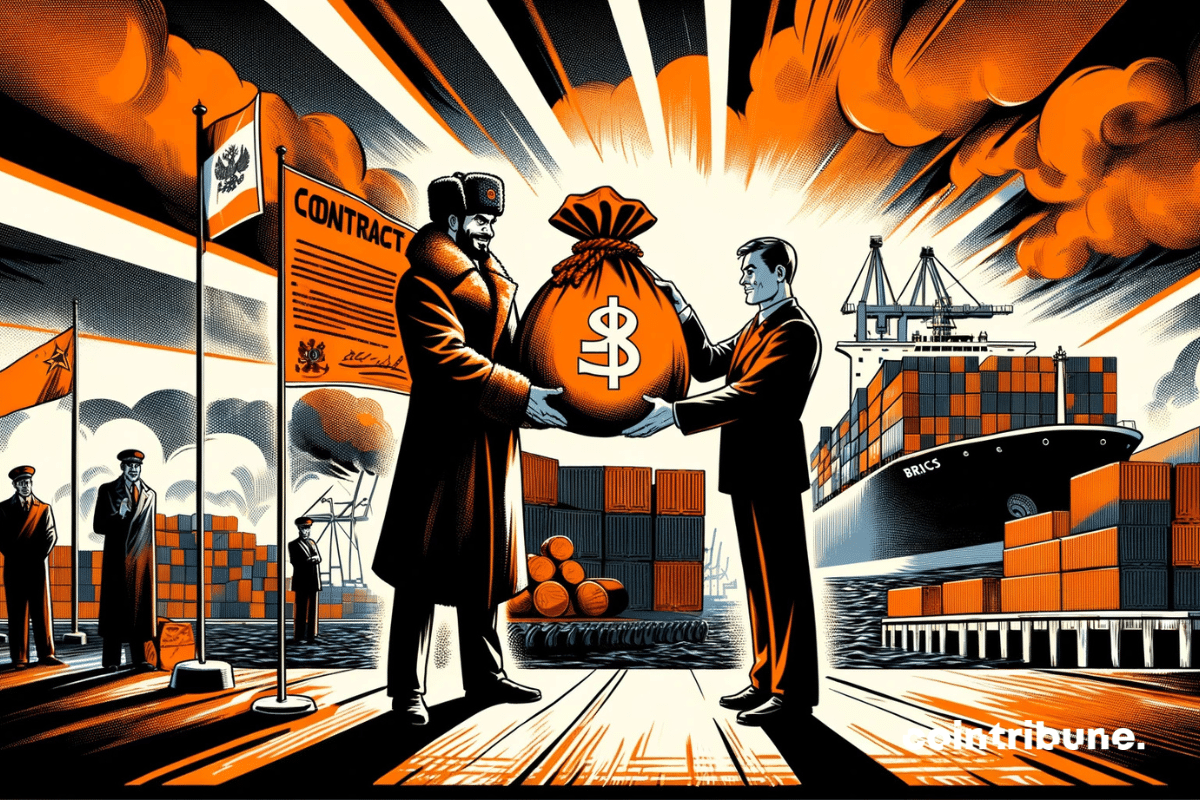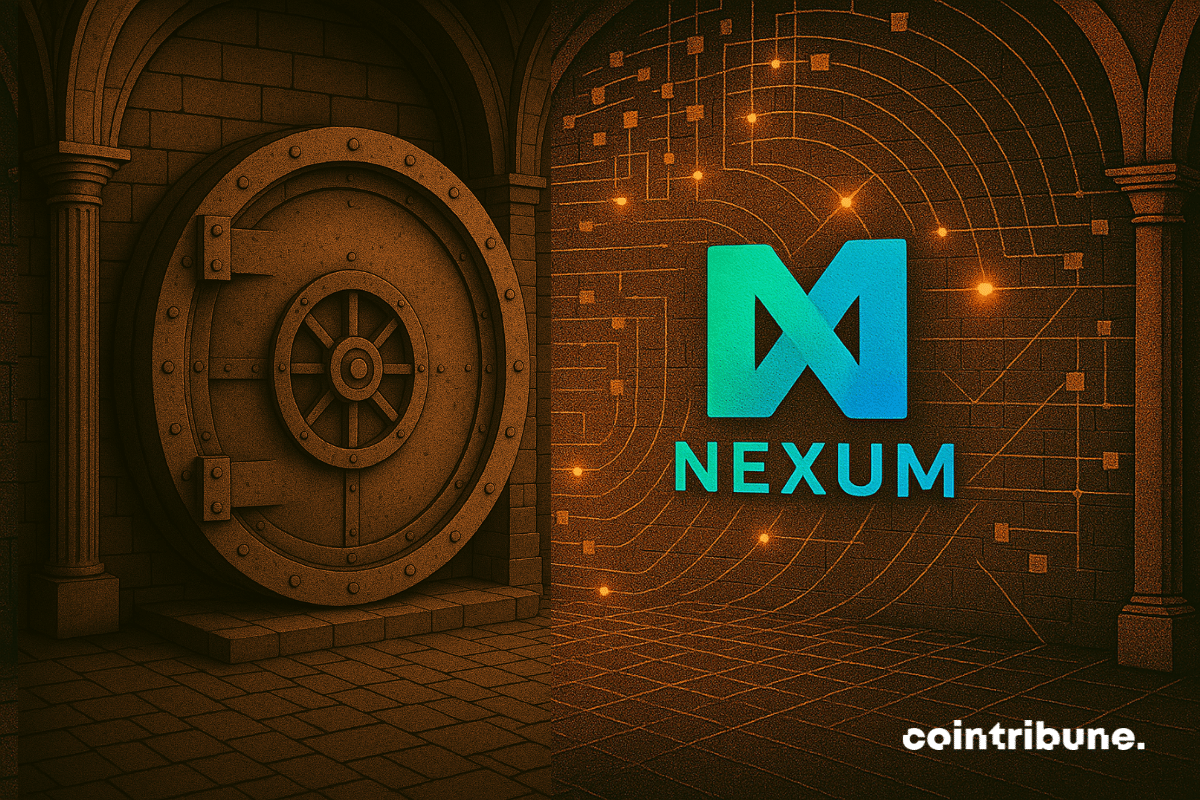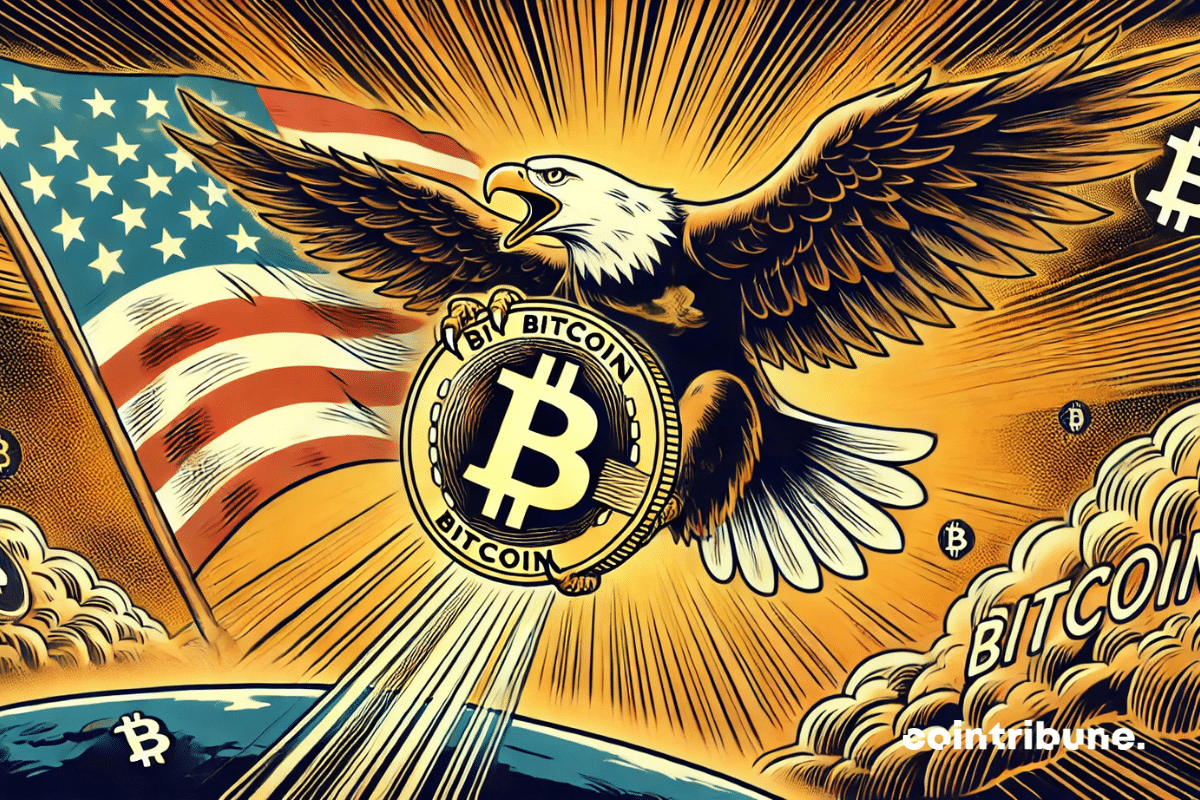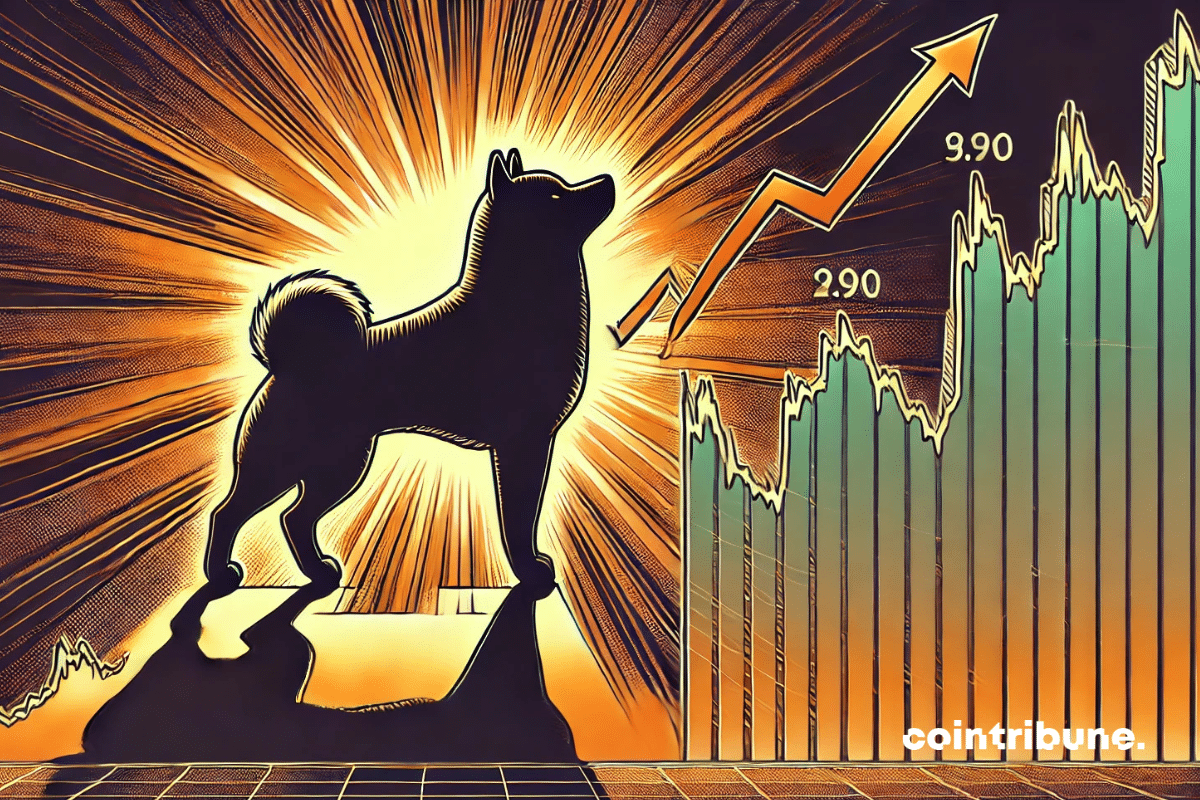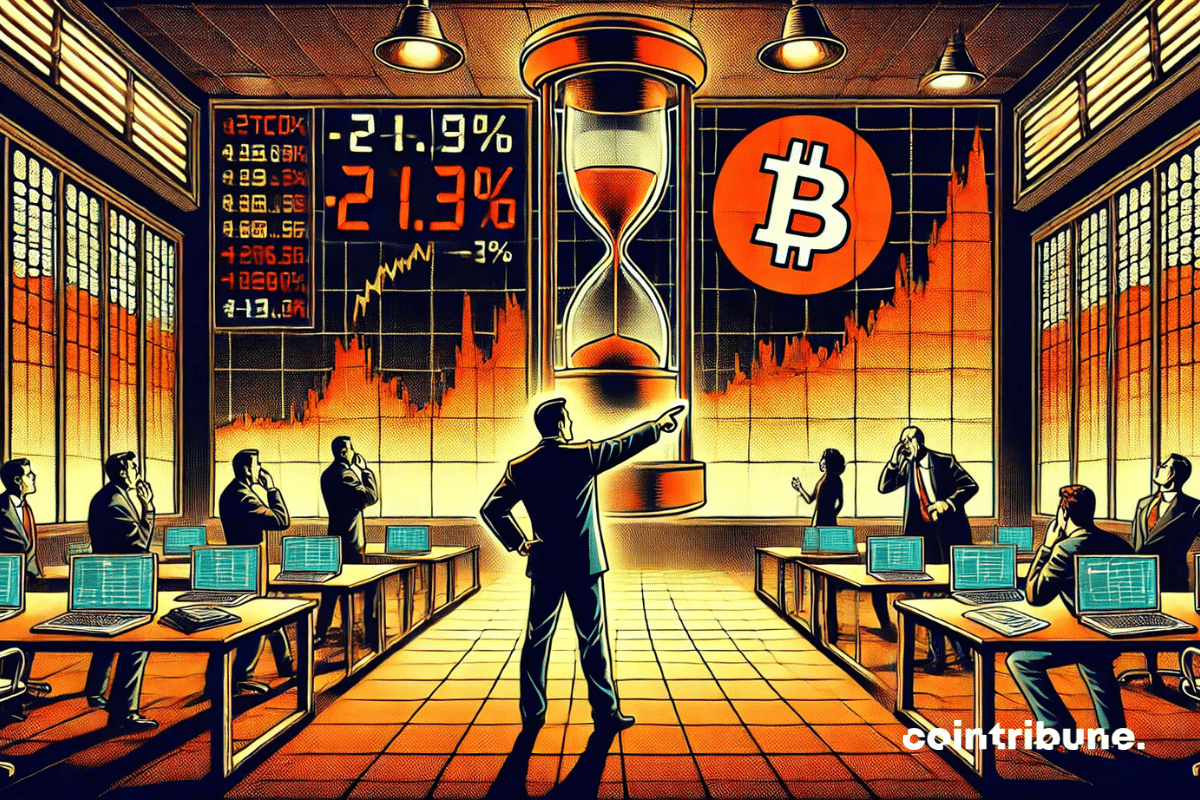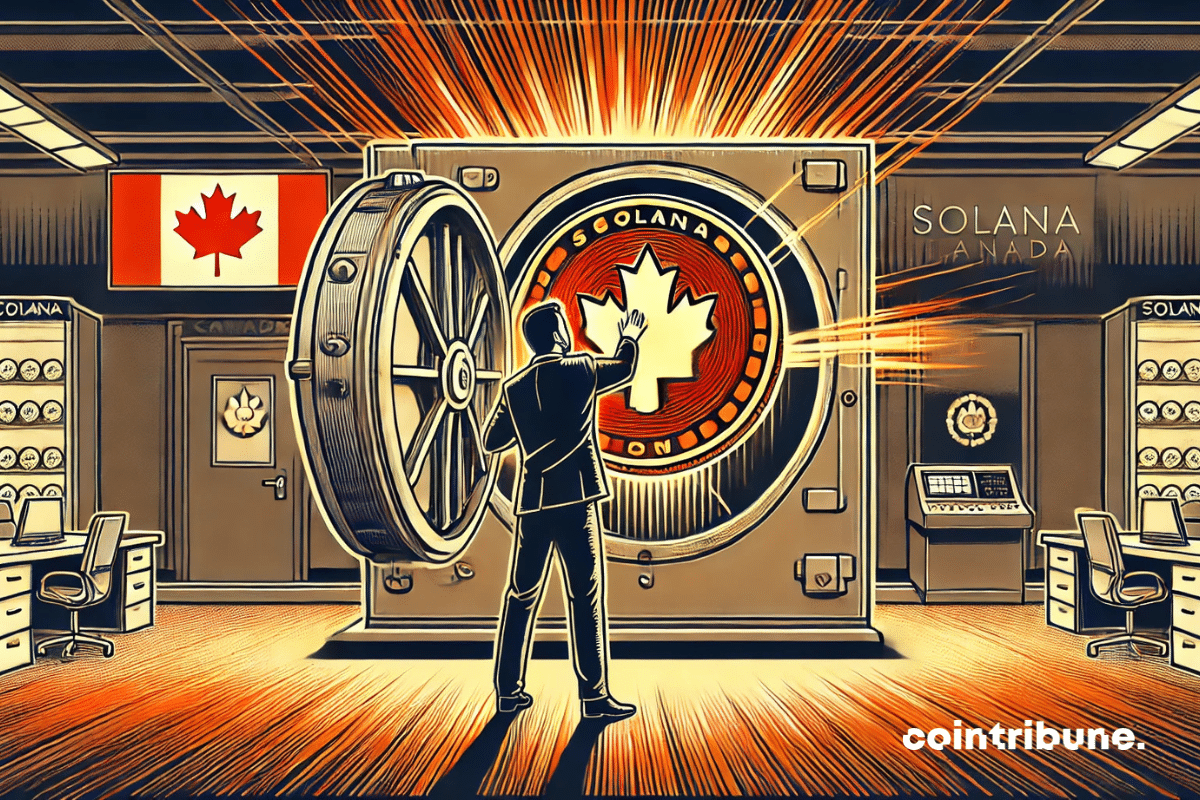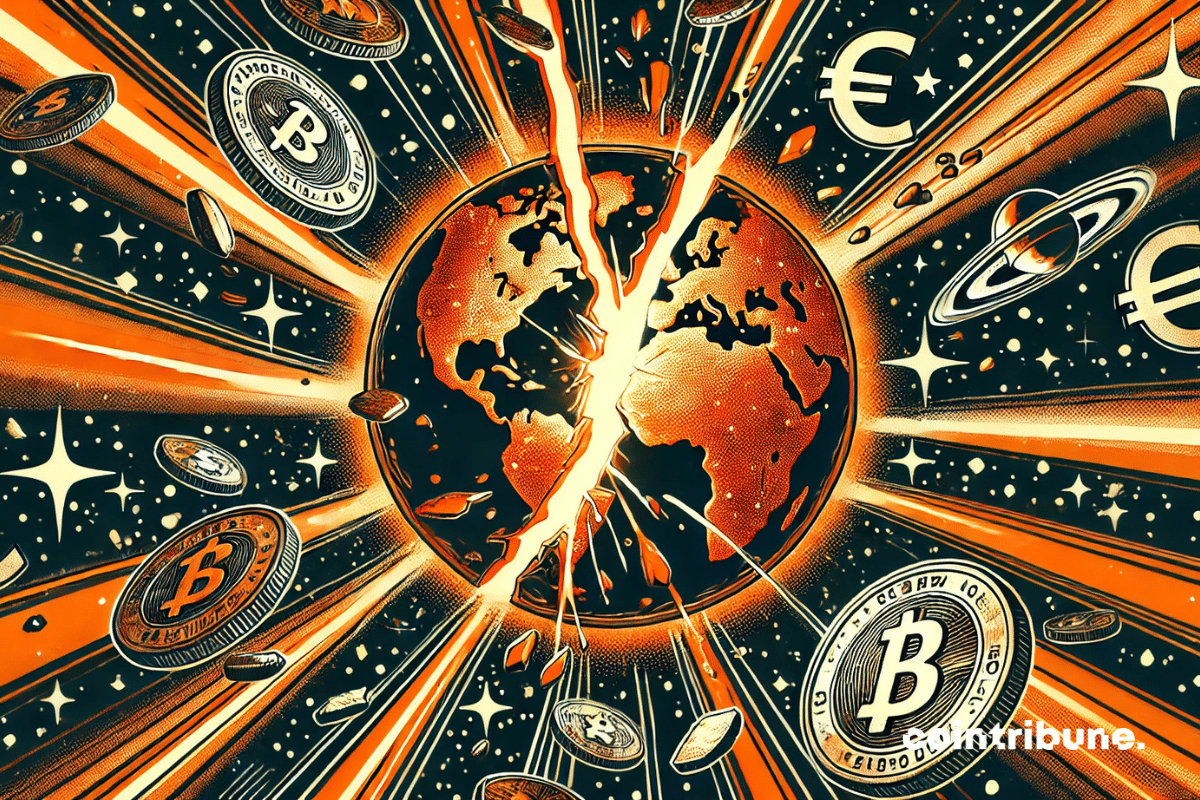While the dollar tap dances on a thread of presidential tweets, the euro is trotting towards the monetary throne, galvanized by the missteps of its starry rival.
Article long
At 1.7%, the Livret A no longer inspires dreams. The LEP saves the furniture, while the youth flee to greener, or more volatile, pastures.
The traditional bond market remains complex, opaque, and reserved for an elite. Credefi is shaking up these norms by launching NFT Bonds, an innovative solution that makes investing in corporate bonds accessible, transparent, and profitable for everyone, thanks to the tokenization of real assets and the power of DeFi.
When crypto turns into an invitation card: to have dinner with Trump, all you need is to own his token. Political marketing is certainly no longer afraid of ridicule.
The crypto universe has just experienced a dramatic twist. While Bitcoin hovers around $94,000, Cardano (ADA) is making an unprecedented breakthrough: its trading volume exceeds one billion dollars in 24 hours, propelling its price up by 11%. A performance that raises as many questions as it fascinates. Behind these figures lie technical mechanisms, power struggles between buyers and sellers, and an alchemy unique to decentralized markets. A deep dive into the guts of a rebound that could reshape the balance of cryptocurrencies.
With Trump, we are witnessing the transition from a trade war to a total economic war between the United States and China.
Bitcoin dethrones Google, taunts Wall Street in a sweat, and climbs like a digital goat on amphetamines while the dollar stumbles and the stock markets take a tax nap.
The United States will have to abandon the exorbitant privilege of the dollar if the goal is truly to become an industrial power again. A good omen for bitcoin.
Gold continues to shine at $3,400 an ounce. A good omen for Bitcoin, which will inherit this fortune sooner or later.
Russia, an influential member of the BRICS bloc, has just crossed a historic monetary milestone: in February, more than half of its imports were settled in rubles. This strategic advancement, confirmed by the Central Bank, is part of a clear break with the dollar-dominated system. As tensions with the West escalate, Moscow is redirecting its trade towards partners deemed "friendly," thus redefining global financial balances and accelerating its trajectory towards strengthened economic autonomy.
Bitcoin is currently navigating through troubled waters. Below the symbolic threshold of $90,000, the landscape turns red for recent holders, while crypto veterans stay the course. Between technical corrections and discreet accumulation by institutions, the market sketches a complex map: that of a fragile balance between latent losses and tenacious confidence. A dive into the meanders of an asset that refuses to yield to fatalism, despite the storms.
While Trump plays the customs officer, Tesla wavers, Alphabet holds firm, and Wall Street takes on water. The markets, on the other hand, brace for the next presidential tweet.
In a world where information often blends with misinformation, Telegram, the encrypted messaging app, found itself at the center of an unprecedented controversy. While France claims to have forced the platform to comply with European regulations following the arrest of its founder, Pavel Durov turns the accusation around: according to him, it was the French authorities who delayed implementing the procedures stipulated by the EU. A rhetorical duel that reveals deeper tensions over the control of tech giants.
The Bank for International Settlements (BIS) has just issued an unprecedented warning: cryptocurrencies and decentralized finance (DeFi) may have crossed a critical threshold, threatening global financial stability. Behind this observation lies a paradox. While the crypto ecosystem prides itself on democratizing finance, according to the BIS, it could amplify inequalities and create unexpected systemic risks. Between massive adoption, shaky regulation, and contagion effects, here is an analysis of a warning that is shaking the markets.
In the bustling city of Dubai, a company named Nexum has been quietly working behind the scenes for years to build a solution that could revolutionize global financial management. With blockchain technology at the core of its approach, Nexum's mission is to bridge the gap between traditional financial systems and the decentralized future. Its goal: to offer solutions that are both innovative and tailored to the real needs of industries such as maritime transport, trade finance, and commodities. As global economies face inefficiencies and regulatory challenges, Nexum's blockchain-powered solutions provide a pathway to a future where financial transactions are faster, more secure, and more inclusive.
Paris Blockchain Week, Europe's premier blockchain and Web3 event, wrapped up its sixth edition at the iconic Carrousel du Louvre, setting a new standard for industry gatherings. The event was a resounding success, drawing over 9,600 attendees from 95 countries, including an impressive 67% C-suite executives, demonstrating the strategic significance of blockchain across global business leadership.
If the United States bought 1 million BTC, the price of bitcoin could reach 1 million dollars. A strategic reserve that would disrupt the global economy and reinvent financial assets.
France is struggling with a massive deficit, Bayrou calls for more work, but amid social cuts and political tensions, the reform risks triggering a governance crisis.
Crypto loans provide an alternative to traditional financing, offering borrowers a fast, flexible, and accessible solution. Unlike banks, these loans allow access to capital without intermediaries, ensuring transparent and secure conditions. Credefi stands out in this sector by combining decentralized finance (DeFi) and traditional finance (TradFi) to offer loans backed by real-world assets (RWA). By leveraging smart contracts, the platform automates fund management and reduces risks. This article explores how crypto loans work on Credefi, the available solutions, and their applications for businesses and investors.
Staking has become one of the most popular ways to generate passive income in the DeFi universe. It allows investors to lock their tokens to secure a network while receiving rewards in return. Credefi offers an innovative staking model based on Module X, a mechanism designed to provide competitive yields while protecting investors. With its governance token xCREDI, participants benefit from enhanced security and a more direct involvement. This article explores how staking works on Credefi, its yield opportunities, and the best strategies to maximize profits while minimizing risks.
Obtaining appropriate financing remains a major challenge for small and medium-sized enterprises (SMEs). Traditional banking solutions impose strict conditions, long timelines, and high collateral requirements. In the face of these obstacles, many businesses are seeking more flexible alternatives. Credefi is revolutionizing financing by combining decentralized finance (DeFi) and traditional finance. Through the integration of blockchain and real-world assets (RWA), the platform offers quick, secure, and accessible loans for SMEs. This article explores the financing solutions offered by Credefi, highlighting their impact on the growth and financial management of businesses.
Tokenized loans are revolutionizing investment by combining the advantages of DeFi and traditional finance. By tokenizing debt instruments, they offer better liquidity, greater transparency, and easier access to funding. Credefi leverages this innovation by allowing investment in loans secured by real-world assets (RWA), transformed into fractional NFT bonds. This approach ensures stable returns, optimal fund security, and decentralized management of investments. This article explores how tokenized loans work, their advantages, and their integration within the Credefi ecosystem.
Real-world assets (RWA) provide a crucial solution for stabilizing decentralized finance (DeFi). Unlike purely crypto loans, RWAs offer tangible collateral, thereby reducing default risk and attracting institutional investors. Currently, DeFi suffers from high volatility, a lack of physical collateral, and limited access to structured financing. These challenges hinder its large-scale adoption. Credefi addresses these issues by integrating RWAs into its lending solutions, combining the security of traditional assets with the transparency and efficiency of blockchain. This article explores how Credefi facilitates investment in RWAs to enhance the security and profitability of DeFi.
Credefi establishes itself as an innovative platform that merges traditional finance (TradFi) and decentralized finance (DeFi) to provide a secure alternative for lending and investment. While TradFi struggles to meet the financing needs of small and medium-sized enterprises (SMEs), DeFi still suffers from high volatility and a lack of institutional recognition. Credefi addresses these issues by combining real-world assets (RWA) as collateral, a credit scoring model validated by Experian, and advanced regulatory compliance solutions. This article explores how Credefi builds a bridge between these two worlds to make DeFi more accessible to institutional investors.
Traditional loans suffer from administrative burdens, high collateral requirements, and prolonged timelines. In parallel, decentralized finance (DeFi) offers a faster and more accessible alternative, but still faces challenges related to volatility and the lack of a structured regulatory framework. Credefi provides an innovative response by combining the strengths of TradFi and DeFi. Its platform allows access to secured loans, backed by real-world assets (RWA) and recorded on the blockchain. This article explores how Credefi is revolutionizing DeFi lending with its hybrid solutions, blending transparency, stability, and accessibility.
Shiba Inu stagnates under pressure, its fall is imminent. Bitcoin absorbs investors, and SHIB, with its anemic volume, could lose a zero in value if no change occurs.
Bitcoin is nearing its peaks, but a specter hovers over its trajectory. While the asset tests $86,000, a dreaded technical indicator remains frozen: the "death cross." This crossover of moving averages, often associated with bearish reversals, persists despite the current surge. Why does such a signal persist? Is it merely an anomaly or a serious warning? As positions accumulate, traders oscillate between confidence and caution, torn by a market in full dissonance.
Trump and Bukele, in their meeting at the White House, ditch Bitcoin to talk about prison and commerce. The future of crypto? It will have to wait until serious matters are settled.
Canada has just set a global precedent by approving the first spot ETFs backed by Solana (SOL), with staking options. While the United States struggles to move beyond Bitcoin and Ethereum, this Canadian initiative elevates Solana to the status of an institutionalized asset, marking a clear break in the hierarchy of listed cryptocurrencies. This is a strong signal for an ecosystem that has long been relegated to the background.
Billionaire Ray Dalio warns that the international order is about to change at the expense of U.S. monetary hegemony. Bitcoin is lurking.
